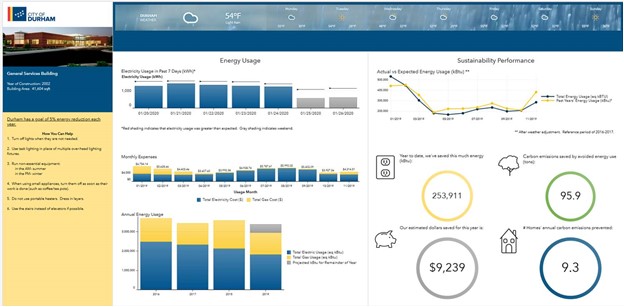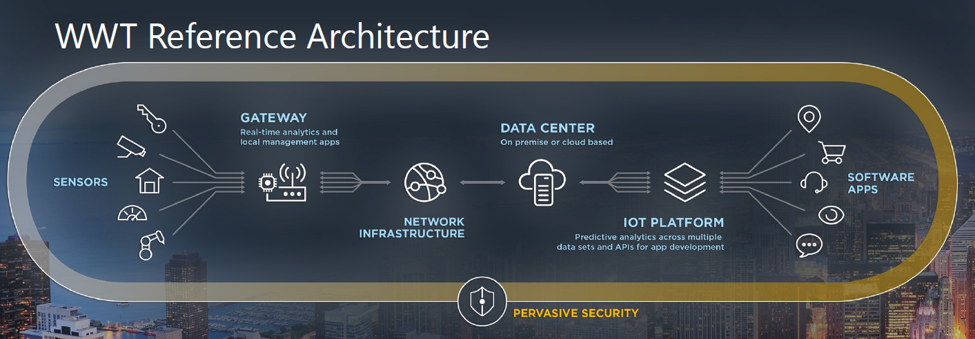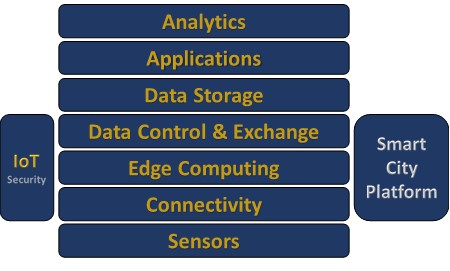

Fueled by the advent of new technologies, smart city platforms hold the promise of providing a unified view into the entire scope of city operations, from transportation and parking to lighting, energy, and health and safety. This unified approach to operations is yielding significant economic, environmental, and social value.
Sometimes, however, it’s difficult to articulate the value proposition that smart city platforms brig to their local governments and municipalities. Many end-users don’t fully realize the benefits of deploying a true smart city platform to tie together the many sources of disparate data in operating domains. Smart city platforms offer the potential to reduce maintenance costs and installed cost of systems. Energy and maintenance savings are often the low-hanging fruit. ARC was fortunate to get several excellent speakers and panelists to articulate the value of smart city platforms at the recent ARC Industry Forum in Orlando. There simply isn’t enough space to cover everything that was discussed in the session, but here are the highlights from the presentations and panel discussion.
Our first presenter was Raynor Smith of Building Clarity, which is an outcomes-based intelligent building solution provider that incorporates advanced analytics and is also partners with SAS for that company’s advanced data analytics capabilities. Building Clarity specializes in taking all these disparate data sources in intelligent buildings and applying advanced analytics and expertise to deliver business results such as significantly reduced energy consumption and carbon footprint.
Raynor oversees the delivery and integration of engineering, construction, and advanced analytics to public and private sector clients throughout the Southeast. Raynor outlined many of the key strategic objectives of today’s cities, many of which revolve around reduced energy consumption, increased efficiency, and carbon neutrality. Buildings and the built environment are the cornerstone of overall city operations, housing essential government and public safety functions, as well as being the repository of essential city data and records and mechanical assets.

Buildings also consume a huge amount of energy. In 2018, residential and commercial buildings accounted for over 40 percent of total energy consumption in the US. Anywhere from 30 to 50 percent of this energy can be saved. But building facility managers don’t always find this savings opportunity to be such an easy task. The OT infrastructure of the built environment consists of a mix of older proprietary technologies and new technologies such as cloud platforms, analytics, and edge computing. Many buildings have performance dashboards and good visualization environments but lack access to the massive amounts of data these facilities produce which means they don’t have visibility into the root cause of many of the problems they are trying to solve.
Cities can use data collection, data preparation, and advanced analytics to bring many data sources together for correlation, analysis, and action. That’s the essential function of a smart city platform, to consolidate data from previously disparate sources and turn it into useful information that can then be used by advanced applications and analytics to drive better decisions and produce results. The large scope of systems that exist in the built environment offers a great place to apply analytics and begin to realize significant benefits. Raynor then gave the example of how Building Clarity worked with the city of Durham, North Carolina
Our second presenter was Ben Beinfeld of World Wide Technology (WWT), which is a large technology service provider that serves both Fortune 500 companies and the Federal space. Ben is tasked with growing the transportation practice within WWT with a special focus on airports, seaports, and mass transit systems.
WWT does a considerable amount of work in the smart city space, and the company has its own Reference Architecture for IoT deployments. WWT has an advanced technology center where it has deployed its reference architecture in five different racks, each covering a different application scenario. These deployments are used to conduct customer evaluations, POCs, and pilot projects. The deployments provide an architecturally independent, multi-vendor view of technology and solutions, allowing customers to make the right choice for their specific technology environments.

The role of pervasive security is ubiquitous in the WWT reference architecture and is based on the assumption that to live securely in public spaces, each device needs to be a trusted platform that doesn’t compromise the security of the whole platform. With numerous examples of attacks on IoT platforms that use shared keys, store keys in firmware, or perform cryptography in code, WWT mitigates these scenarios by incorporating a secure cryptographic key storage and a secure cryptographic processor.
As a case study, Ben explained how WWT partnered with Fybr to implement a solution for road condition monitoring in a mining operation that involved optimizing the transportation system for the mining trucks which included obtaining data from the truck engines as well as data on road conditions and other factors. WWT was able to bring together data from 15 siloed sources on the Fybr platform, including the 200 sensors mounted on each truck, to provide cost savings o US $350,000 per engine on the mining trucks, as well as significant cost reductions related to reduced cycle times and increases in availability.
Anthony Veri of Integrated Network Concepts gave a detailed presentation on his company’s view of what a smart city platform is, what it can do, and how smart city platforms differ from overall IoT platforms. Anthony characterized smart city platforms as operating on a single pane of glass to display data collected from various sources (i.e. smart technology, AI, IoT sensors) across multiple applications, agencies, and departments to aid in intelligent decision making. Smart City Platforms can display new (previously unknown) raw data and to display actionable data, such as alarms, alerts, areas of concern, outliers, and inefficiencies via IoT Cloud applications and analytic software.
IoT Platforms focus on collecting and displaying IoT data from diverse sources. IoT Platforms can be an entity on their own. Vendor agnostic connecting to many different sensors & gateways. They can also be part of a company’s full IoT solution where they sell the sensors, gateways, platform, cloud, and analytics. Smart City Platforms are more encompassing of all city infrastructure, departments, and services. They should be more advanced and capable of handling more data. With access to a wide variety of data, the security of Smart City Platforms is even more important as the Digital Transformation continues.

Anthony also included a section on selecting smart city suppliers, which can be a difficult task for many end users/owner-operators. There are many proprietary smart city platforms, and each has its own unique capabilities and limitations. Sometimes customization is not available or cost-prohibitive. The advantage of proprietary smart city platforms is that they have been tested and developed for long periods of time to perform accordingly. Many cities don’t have the talent or time to do this on their own. Every vendor’s marketing material says they are the best, but it’s up to the end-user to evaluate the offering and determine if the supplier meets the specific requirements of their city. It’s also up to the end-user to determine what the potential economic benefits and ROI of the smart city platform are.
After the presentations, all the presenters plus additional panelists participated in a good discussion, where we got lots of questions from the audience. Additional panelists included Matt Willenbrink of Fybr, James Caton of SAS, and Peter Murray of Dense Networks. We will post the link to the video from this panel discussion once the YouTube videos are available.

